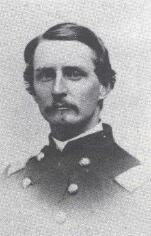Horatio Rogers Jr. facts for kids
Quick facts for kids
Horatio Rogers Jr.
|
|
|---|---|
 |
|
| Associate Justice of the Rhode Island Supreme Court | |
| In office 1891–1903 |
|
| Attorney General of Rhode Island | |
| In office 1888–1889 |
|
| Governor | Royal C. Taft |
| Preceded by | Ziba O. Slocum |
| Succeeded by | Ziba O. Slocum |
| In office 1864–1867 |
|
| Governor | James Y. Smith Ambrose Burnside |
| Preceded by | Abraham Payne |
| Succeeded by | Willard Sayles |
| Personal details | |
| Born | May 18, 1836 Providence, Rhode Island, United States |
| Died | November 12, 1904 (aged 68) Providence, Rhode Island, United States |
| Resting place | Swan Point Cemetery |
| Political party | Republican |
| Other political affiliations |
National Union (1864–1865) |
| Spouses | Lucia Waterman Emily Priscilla Smith |
| Children | Arthur |
| Parents | Horatio Rogers Sr. Susan Curtis |
| Alma mater | Brown University |
| Military service | |
| Allegiance | |
| Branch/service | Union Army |
| Rank | |
| Unit | 3rd Rhode Island Heavy Artillery Regiment |
| Commands | 11th Rhode Island Infantry Regiment 2nd Rhode Island Infantry Regiment |
| Battles/wars | American Civil War |
Horatio Rogers Jr. (born May 18, 1836 – died November 12, 1904) was an important American lawyer and judge. He also served as an officer in the Union Army during the American Civil War. Rogers was the top lawyer for Rhode Island (called the Attorney General) twice. Later, he became a judge on Rhode Island's highest court, the Rhode Island Supreme Court.
Contents
Growing Up in Rhode Island
Horatio Rogers Jr. was born in Providence, Rhode Island, on May 18, 1836. His parents were Susan Curtis and Horatio Rogers Sr. He had an older brother named John Henry. John Henry later became a priest.
Horatio Jr. went to Brown University for his college studies. After that, he earned a law degree.
Serving in the Civil War
During the American Civil War, Horatio Rogers Jr. was a brave officer. He started as a major in the 3rd Rhode Island Heavy Artillery. Then, he became a colonel leading the 11th Rhode Island Infantry.
Later, he commanded the 2nd Rhode Island Infantry as a colonel. He led this group during the famous Battle of Gettysburg. After the battle, he wrote about how many people had died.
Rogers left the Army on January 14, 1864. For his "gallant and meritorious service," he was given the honorary rank of brigadier general on March 13, 1865.
A Career in Law
After the war, Rogers became a well-known lawyer and judge. In 1864, he decided to run for Attorney General of Rhode Island. This job means being the chief legal officer for the state.
He won the election with a very high number of votes. He served as Attorney General from 1864 to 1867. He held the position again from 1888 to 1889.
Rogers also worked with his father-in-law, James Y. Smith, in a manufacturing business. In 1891, he was chosen to be a judge on the Rhode Island Supreme Court. He served on the state's highest court until 1903.
Personal Life
Horatio Rogers Jr. was married two times. His first wife was Lucia Waterman. They had two sons, Arthur and Lucian. Sadly, Lucia passed away in 1867. Arthur later became a priest.
His second wife was Emily Priscilla Smith. She was the daughter of James Y. Smith. James Y. Smith was once the Mayor of Providence and also the Governor of Rhode Island. Horatio and Emily had one daughter, also named Emily Priscilla Smith Rogers.
Writing and Books
Besides his work as a lawyer and judge, Rogers was also a writer. He was a member of the American Antiquarian Society, which studies American history.
He wrote several books during his life. His most famous book was Private Libraries of Providence. This book described and sketched private libraries in homes around Providence. At that time, it was not common for everyone to have access to public libraries.
His book included details about his own library. It also featured libraries owned by important people in Rhode Island. These included John Russell Bartlett, Royal C. Taft, and John Carter Brown.
Later Life
Horatio Rogers Jr. passed away on November 12, 1904, when he was 68 years old. He was buried in Swan Point Cemetery in Providence. Both of his wives are buried beside him.


